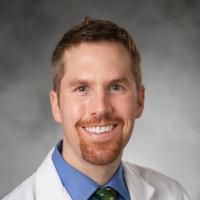Utility of Autopsy among Pediatric Allogeneic Hematopoietic Stem Cell Transplant Recipients: One Last Chance to Learn?
Date
2018-06-09
Journal Title
Journal ISSN
Volume Title
Repository Usage Stats
views
downloads
Citation Stats
Abstract
Autopsy may confirm clinical diagnoses or identify conditions that were not suspected prior to a patient's death. Previous studies evaluating the utility of autopsy in hematopoietic stem cell transplant (HSCT) recipients yielded conflicting results.We conducted a retrospective cohort study of children (<18 years of age) undergoing allogeneic HSCT at Duke University who died of any cause between January 1, 1995 and December 31, 2016. We evaluated associations between patient characteristics and autopsy performance using Chi-square or Fisher's exact tests. We reviewed autopsy reports to determine the concordance between pre-autopsy causes of death and pathological diagnoses identified on autopsy. We classified unexpected diagnoses on autopsy using criteria developed by Goldman et al. We evaluated for temporal changes in the autopsy consent rate and the frequency of unexpected diagnoses on autopsy using Cochran-Armitage tests.During the 22-year study period, 475 patients died and had data available on autopsy performance, and 130 (27%) of these patients underwent autopsy. The autopsy consent rate declined over time (P<0.0001), with autopsies being performed for 40% of deaths in 1995-1999 and 17% of deaths in 2009-2016. White patients were more likely to undergo autopsy than non-white patients (P=0.03). There were no associations between autopsy performance and patient age, sex, HSCT indication, or HSCT donor. Unexpected diagnoses were identified in 31 (24%) autopsies. The proportion of autopsies with an unexpected diagnosis did not change during the study period (P=0.45). However, infectious diagnoses that would have led to a change in management were more frequently identified on autopsies in 1995-2003 than in 2004-2016 (20% vs. 0%; P=0.001).The autopsy consent rate for pediatric HSCT recipients at our institution declined substantially over the past several decades. The utility of autopsy in this patient population remains high despite a reduction in the identification of unexpected infections.
Type
Department
Description
Provenance
Subjects
Citation
Permalink
Published Version (Please cite this version)
Publication Info
Kelly, Matthew S, Lisa Spees, Richard Vinesett, Andre Stokhuyzen, Lauren McGill, Alan D Proia, Kirsten Jenkins, Mehreen Arshad, et al. (2018). Utility of Autopsy among Pediatric Allogeneic Hematopoietic Stem Cell Transplant Recipients: One Last Chance to Learn?. Biology of blood and marrow transplantation : journal of the American Society for Blood and Marrow Transplantation. 10.1016/j.bbmt.2018.05.030 Retrieved from https://hdl.handle.net/10161/17197.
This is constructed from limited available data and may be imprecise. To cite this article, please review & use the official citation provided by the journal.
Collections
Scholars@Duke

Matthew Kelly
My research is broadly focused on elucidating the complex interactions that exist between the host microbiome and exogenous pathogens that cause infections in children. We have several ongoing projects evaluating: 1) the impact of the upper respiratory microbiome on the risk of colonization and invasion by bacterial respiratory pathogens among infants in Botswana; 2) associations between the gut microbiome of pediatric stem cell transplant recipients and the risk of infections (bloodstream infection, C. difficile infection) and graft-versus-host disease; and 3) the role of the gut and respiratory microbiomes in mediating COVID-19 infection susceptibility and disease severity in children. Ultimately, I aim to develop strategies that use targeted modification of the microbiome for the prevention of infections in children.

Alan David Proia
My research interests are focused on the pathology and genesis of diseases affecting the eye and adjacent structures.

Paul Langlie Martin
For most of my career in Pediatric Hematology/Oncology I have focused on the use of stem cell transplant for the treatment of pediatric leukemias (ALL, AML, CML and JMML) and other non-malignant blood disorders, such as sickle cell disease, hemaphagocytic disorders, Wiskott-Aldrich, aplastic anemia, Diamond-Blackfan Anemia, as well as inherited metabolic diseases. In addition to focusing on determining the best use of stem cell transplants for these disorders, I have also been involved in clinical research investigating the prevention and treatment of transplant related morbidity, particularly veno-occlusive disease of the liver, infections and diffuse alveolar hemorrhage. As study chair for the Children's Oncology Group protocol 9904, I was involved in the development, implementation and analysis of a large, international frontline study of childhood acute lymphoblastic leukemia. Results from this study show that a significant number of children with certain favorable cytogenetic abnormalities in their leukemic cells and who have a rapid response to their initial chemotherapy can expect to have a >95% chance of cure when treated with relatively low intensity chemotherapy.
I have concentrated on providing high quality care for high risk leukemia patients who require high intensity therapies, such as stem cell transplant and immunotherapy. As a member of the Pediatric Transplant and Cellular Therapy Division I provide clinical care for these patients. As a member of various cooperative groups and local PI for several drug trials, I have worked to provide better care and more specific therapies for the toxicities associated with stem cell transplant.
I have also collaborated with the Pediatric Immunology Division to provide a life-saving therapy for a small group of patients with thymic dysfunction, which causes severe immunodeficiency. Our clinical team now provides support during these patients hospital admissions for donor thymus tissue implantation. We once again achieved a new record for the number of implanted patients during the 2022-2023 academic year.
Unless otherwise indicated, scholarly articles published by Duke faculty members are made available here with a CC-BY-NC (Creative Commons Attribution Non-Commercial) license, as enabled by the Duke Open Access Policy. If you wish to use the materials in ways not already permitted under CC-BY-NC, please consult the copyright owner. Other materials are made available here through the author’s grant of a non-exclusive license to make their work openly accessible.
